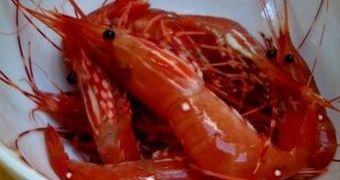Wildlife researchers and environmental scientists in Chile are now trying to make head and tail of a rather confusing incident. Long story short, thousands of dead prawns have washed ashore on the coastline of the country's Conception province, and nobody seems able to offer a proper explanation for this phenomenon.
The researchers in charge of figuring out what caused these crustaceans to die and later on beach in Chile say that, for the time being, they are considering several explanations.
Thus, it may very well be that the prawns were affected by a deadly virus. On the other hand, it is possible that the crustaceans died as a result of their food sources being poisoned.
Lastly, it is being said that offshore oil exploration has somehow toyed with these crustaceans' natural habitats, and that this was what ultimately led to their death. Mirror says that, as far as local fishermen are concerned, the prawns were killed by an increase in the temperature of the waters in which they typically live.
More precisely, they link this temperature increase to power stations located nearby and argue that it was only this past weekend when several hundred dead crabs washed ashore because of the very same reasons.
“I'm 69 years old and started fishing when I was nine but, as a fisherman, I never saw a disaster of this magnitude,” one local named Gregorio Ortega told members of the press.
According to SkyNews, Victor Casanova, a spokesperson for Environmental and Cultural Heritage Crimes Unit, commented with respect to this incident as follows:
“What we are doing today is compiling the most evidence possible to determine if we are facing some kind of environmental crime.”
“We are going to go out to Coronel Bay to determine the physical temperature parameters, electric conductivity, and above all the oxygen, which is an important issue to highlight,” he went on to add.
It is to be expected that more information will soon be made available to the general public.

 14 DAY TRIAL //
14 DAY TRIAL //